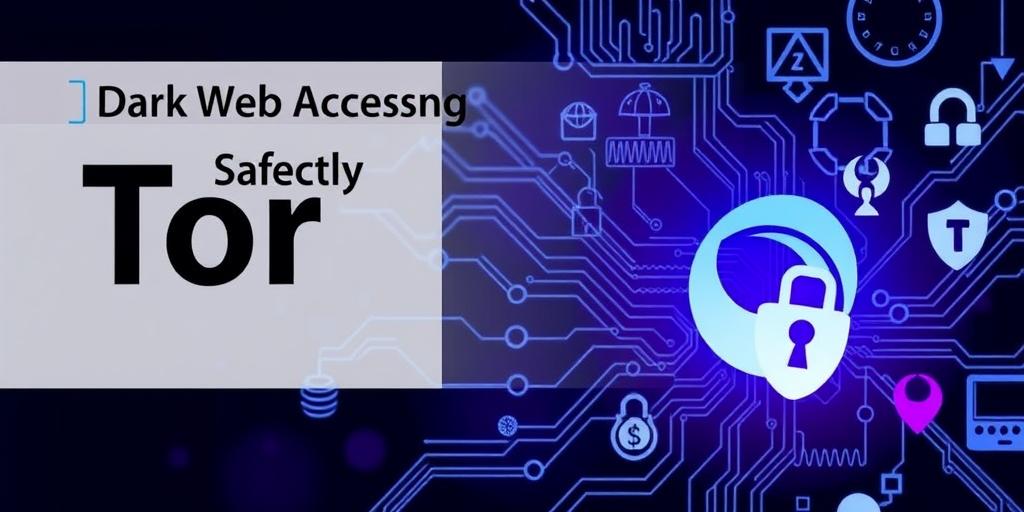Safely Accessing the Dark Web: A Beginner's Guide to Tor Browser
The dark web, a hidden part of the internet, often sparks curiosity and concern. While it can be associated with illicit activities, it also serves as a haven for privacy advocates, journalists, and individuals in oppressive regimes seeking uncensored information. Accessing the dark web requires specific tools and precautions, and this guide will walk you through using Tor Browser safely.
Understanding the Dark Web and Tor
What is the Dark Web?
The dark web is a subset of the deep web, which includes all web content not indexed by standard search engines like Google. Unlike the surface web (the part of the internet we use daily), the dark web requires special software to access, providing anonymity and privacy for its users.
What is Tor Browser?
Tor Browser is a modified version of Firefox designed to anonymize your web traffic by routing it through a network of volunteer-operated servers. This process, called onion routing, encrypts your data and hides your IP address, making it difficult to trace your online activities.
Step-by-Step Guide to Using Tor Browser
1. Downloading Tor Browser
- Visit the Official Website: Always download Tor Browser from the official Tor Project website (torproject.org) to avoid malware.
- Verify the Download: After downloading, verify the signature of the package to ensure it hasn't been tampered with. The Tor Project provides instructions on how to do this on their website.
2. Installing Tor Browser
- Choose a Secure Location: Install Tor Browser in a secure location on your computer. Avoid using cloud-synced folders.
- Follow the Installation Instructions: Run the installer and follow the on-screen instructions. The installation process is straightforward.
3. Configuring Tor Browser
- Connect to the Tor Network: Launch Tor Browser and click "Connect." The browser will automatically establish a connection to the Tor network. This process might take a few minutes.
- Test Your Connection: Once connected, verify that your IP address has changed by visiting a website like check.torproject.org. It should confirm that you are using Tor.
Safety Measures and Best Practices
1. Update Tor Browser Regularly
- Automatic Updates: Keep Tor Browser updated to protect against security vulnerabilities. The browser usually updates automatically, but you should periodically check for updates manually.
2. Use a VPN with Tor (Optional)
- Extra Layer of Security: Consider using a Virtual Private Network (VPN) in conjunction with Tor for an additional layer of security. Connect to the VPN before launching Tor Browser.
- Choose a Reputable VPN: Select a VPN provider with a strong reputation for privacy and security.
3. Disable Scripts
- NoScript Add-on: Tor Browser comes with the NoScript add-on pre-installed. Use it to block JavaScript and other scripts that can compromise your anonymity. Allow scripts only on trusted sites.
4. Avoid Downloading Files
- Potential Risks: Downloading files from the dark web can be risky, as they may contain malware. If you must download a file, scan it with an antivirus program first.
5. Be Mindful of What You Click
- Phishing and Scams: The dark web is rife with phishing sites and scams. Be cautious and avoid clicking on suspicious links.
6. Don't Use Personal Information
- Maintain Anonymity: Never use your real name, email address, or other personal information on the dark web.
7. Use Strong Passwords
- Password Security: Use strong, unique passwords for any accounts you create on the dark web.
8. Stay Informed
- Security News: Stay updated on the latest security threats and best practices for using Tor Browser safely.
Conclusion
Accessing the dark web can be done safely with the right tools and precautions. By following this guide, you can protect your privacy and anonymity while exploring this hidden part of the internet. Always remember to stay vigilant and prioritize your security to avoid potential risks.
Long-Tail Keywords
- "how to use tor browser safely"
- "tor browser beginner's guide"
- "accessing dark web safely"
- "dark web safety tips"
- "tor browser security guide"









